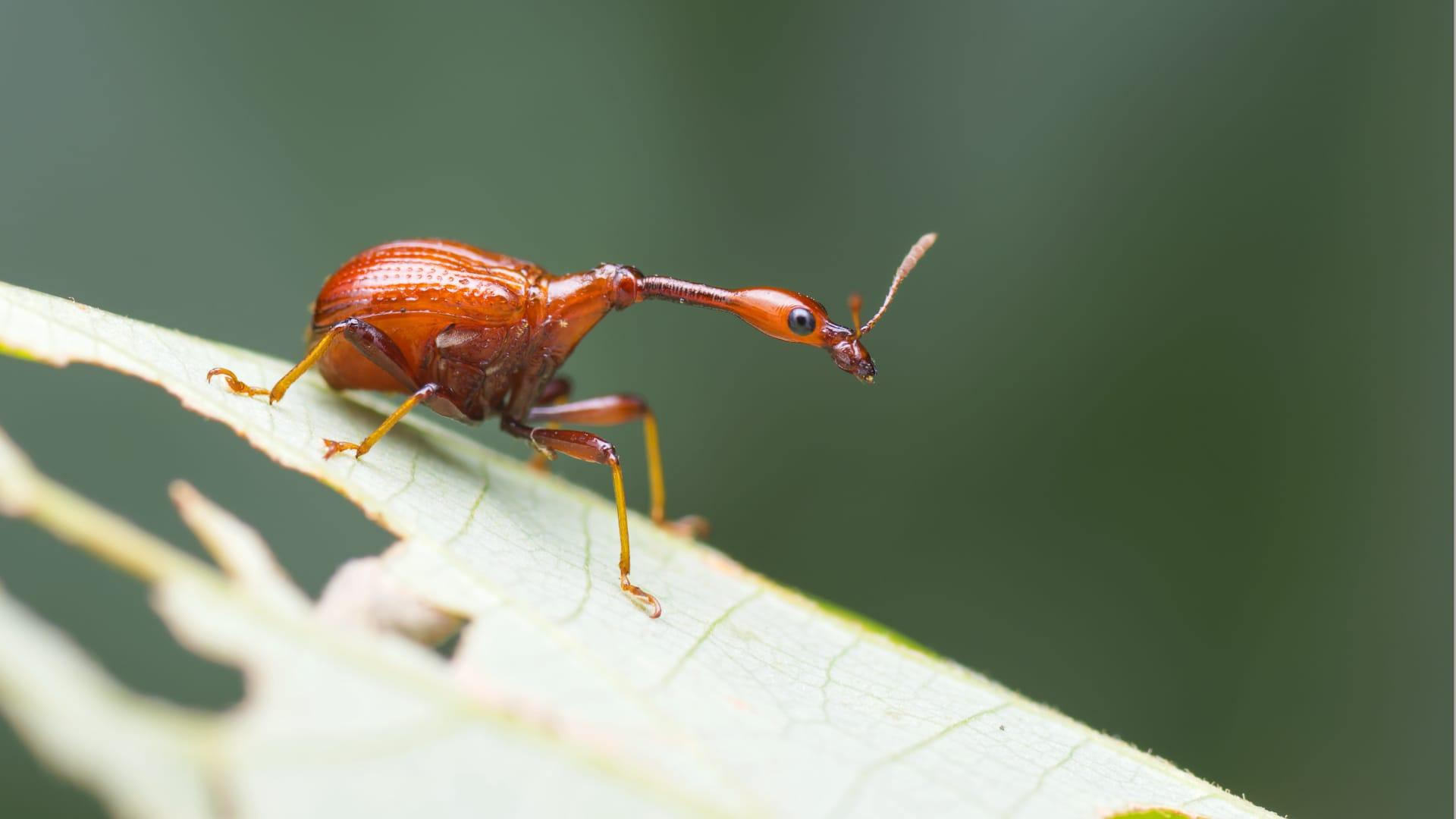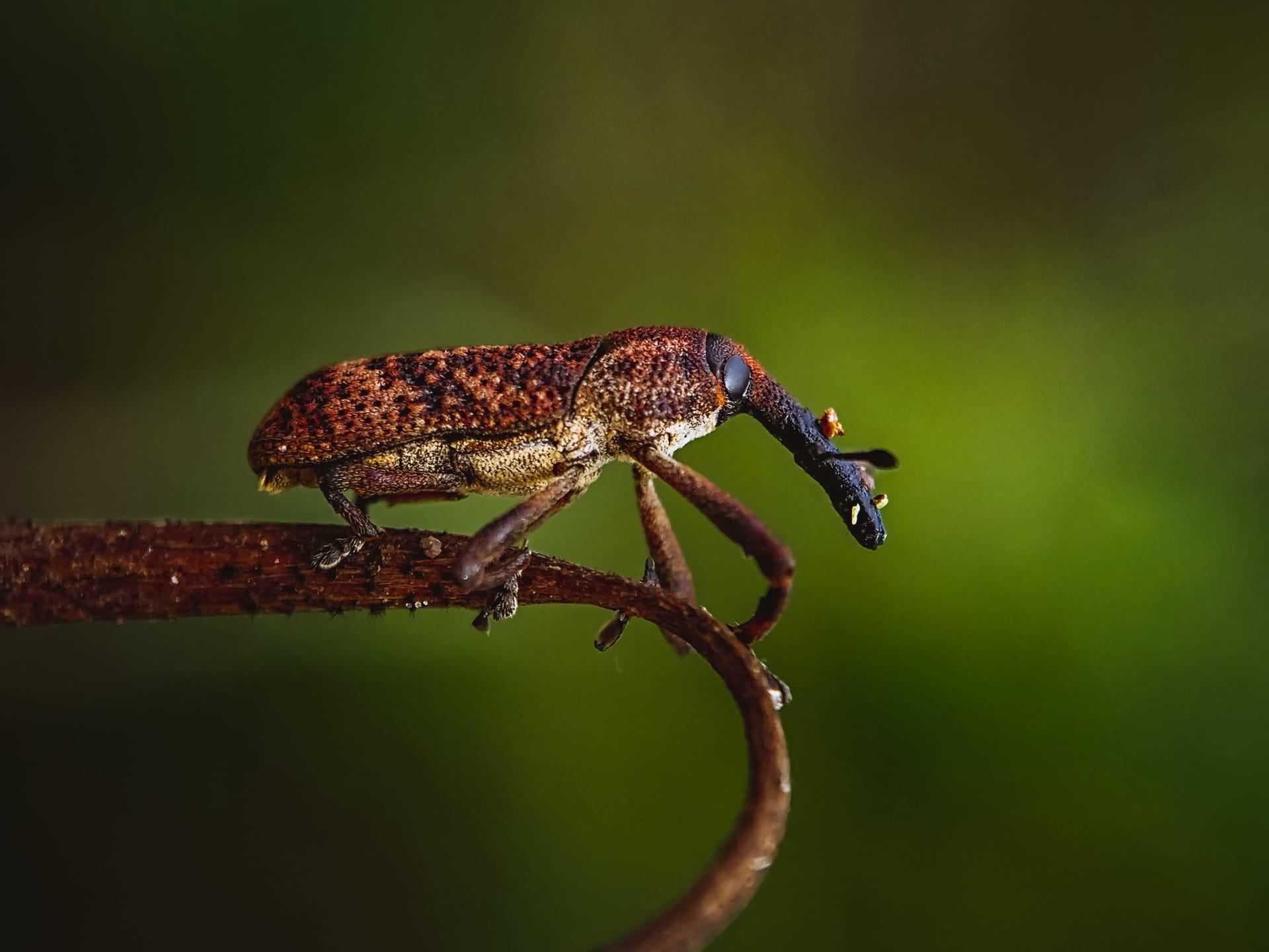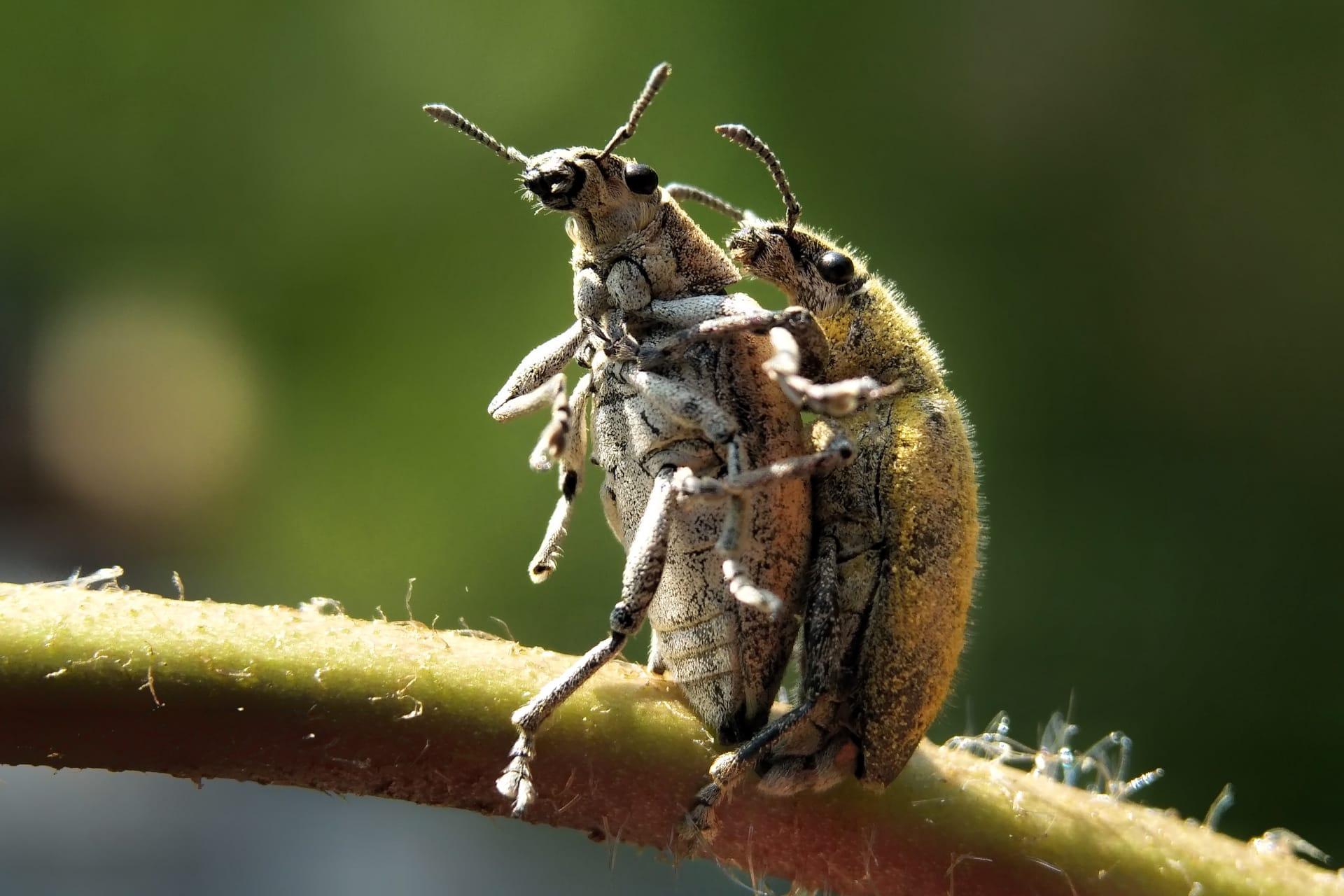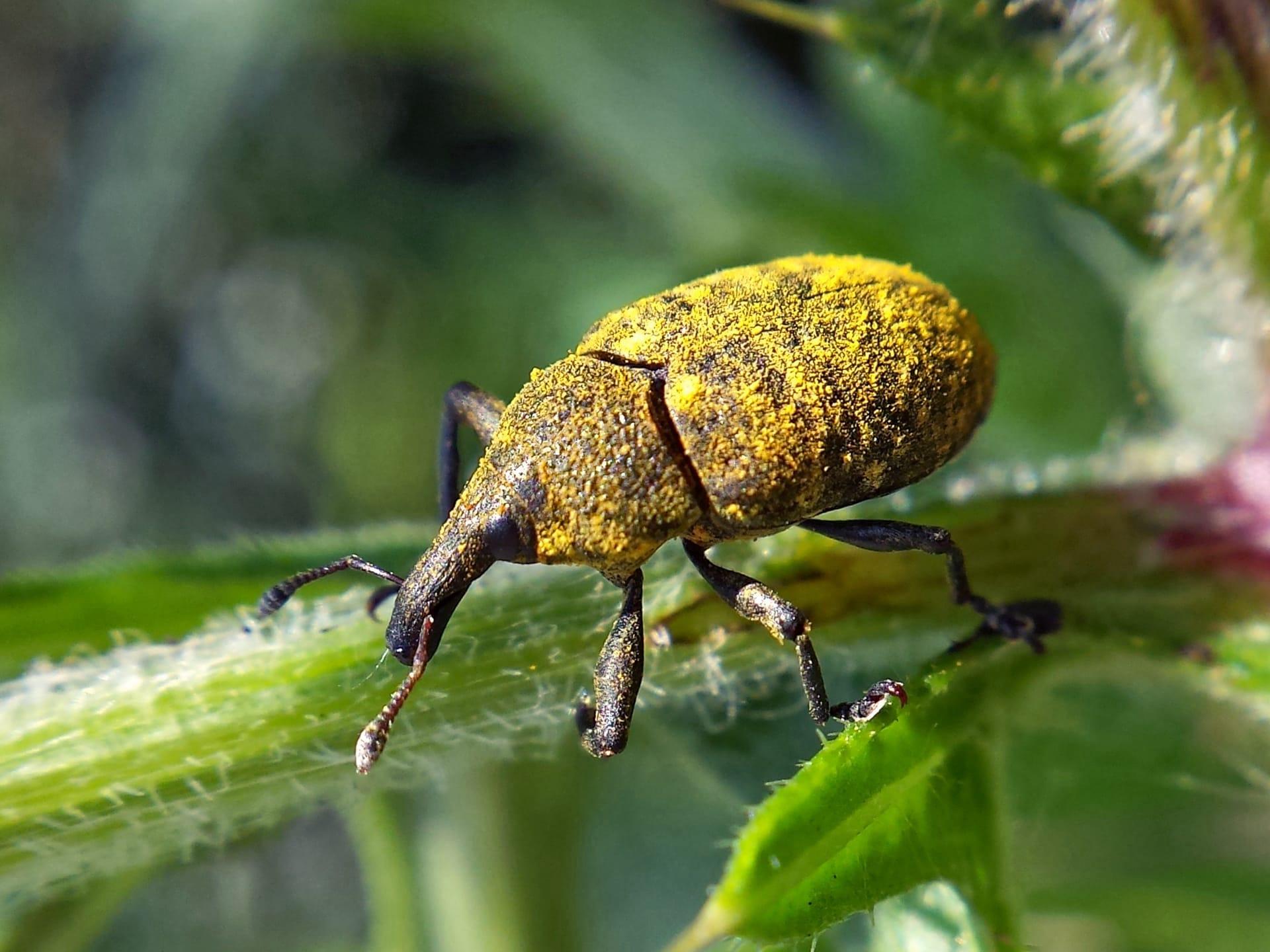1
Elephant weevils, with their elongated snouts, are a wonder of adaptation. This unique feature, varying in length, is not just for show. In male elephant weevils, the snout can grow up to 1.5 inches, nearly three times the length of their body! Females, while still sporting a prominent snout, have shorter ones. These snouts aren't just for attracting mates; they serve a vital role in feeding and egg-laying. The weevils use them to drill into soft wood, creating tunnels to lay eggs and to access food sources like sap.
Weevils, in general, exhibit a fascinating array of colors and sizes, but the elephant weevil is particularly striking with its metallic green, gold, or black hues. Their bodies, typically measuring up to 1 inch in length, are covered in tiny scales, giving them a speckled appearance. This colorful armor isn't just for show; it provides camouflage among the foliage and tree bark, a critical survival trait in their natural habitat.

2
Elephant weevils are not only interesting in appearance but also in their life cycle. These insects undergo complete metamorphosis, meaning they have four distinct life stages: egg, larva, pupa, and adult. The larval stage is especially intriguing, as it can last up to two years! During this time, the larvae feed on decomposing wood, playing a crucial role in the ecosystem by breaking down dead trees and recycling nutrients.
Another captivating fact about elephant weevils is their method of communication. These insects communicate through a process called 'stridulation', where they rub parts of their body together to produce sound. This is particularly important during mating season. The males use these sounds to attract females and to ward off rival males, turning their elongated snouts into an instrument of love and defense.

3
Did you know that elephant weevils are quite the travelers? While they are not migratory insects, they are known to travel considerable distances in search of suitable habitats and food sources. Studies have shown that these weevils can travel several kilometers, which is quite impressive considering their small size.
Elephant weevils also exhibit unique feeding habits. Unlike other weevil species that may be more generalist in their diet, elephant weevils are quite selective. They predominantly feed on the wood and bark of specific types of trees, particularly those in the family Myrtaceae, which includes eucalyptus. This dietary preference not only shapes their habitat but also influences the health and regeneration of these forests.

4
The reproductive behavior of elephant weevils is another fascinating aspect. Females are known to be particularly selective when choosing a site to lay their eggs. They prefer soft, decaying wood, where they use their snouts to drill into the wood and deposit their eggs. This not only provides a safe environment for the eggs but also ensures that the larvae have an immediate food source upon hatching.
Interestingly, elephant weevils have developed a unique defense mechanism against predators. When threatened, they play dead, a behavior known as 'thanatosis'. This act of feigning death can be so convincing that predators often lose interest, providing the weevil with a chance to escape. This survival tactic is a testament to the weevil's adaptability and cunning in the wild.

5
Elephant weevils are also significant in the field of biological control. Due to their selective feeding habits, they are sometimes used as a natural means to control the spread of certain invasive tree species. This method of pest control is environmentally friendly and sustainable, reducing the need for chemical pesticides.
Last but not least, the elephant weevil's role in folklore and cultural beliefs is noteworthy. In some cultures, these insects are seen as symbols of strength and persistence, owing to their ability to thrive in various environments and their unique physical characteristics. This cultural significance highlights the diverse ways in which humans interact with and perceive the natural world around them.